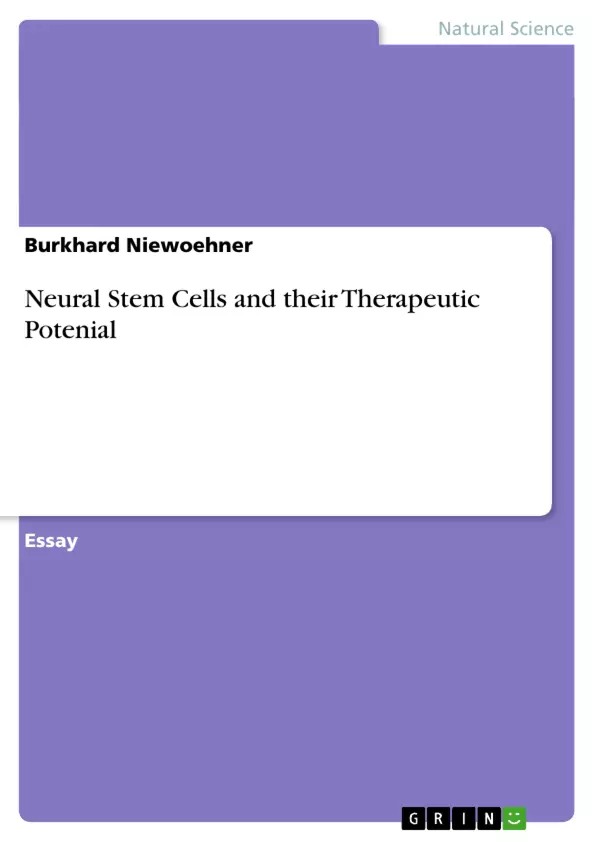In contrast to previous opinions, it is now well established that neurogenesis occurs in the adult mammalian brain, at least in restricted areas where cells with stem cell like properties can be found. While great efforts have been expended to investigate the intrinsic properties of neural stem cells (NSCs) and the factors regulating their differentiation during the last decade, recent lines of research have begun to explore their therapeutic potential. This essay briefly summarizes the current state of stem cell research and gives a survey of the experimental approaches employed to investigate potential therapeutic applications of NSCs in the treatment of Parkinson disease and glioblastoma.
Inhaltsverzeichnis (Table of Contents)
- Neural stem cells in the adult central nervous system
- History
- Characteristics and characterization of neural stem cells
- Functions of neural stem cells in the adult brain
- Therapeutic potential of neural stem cells
- Applications in Parkinson's disease
- Applications in glioblastoma
- Ethical considerations
- Summary and conclusion
Zielsetzung und Themenschwerpunkte (Objectives and Key Themes)
This essay explores the therapeutic potential of neural stem cells (NSCs) in the treatment of Parkinson's disease and glioblastoma. It summarizes the current state of stem cell research and provides an overview of the experimental approaches employed to investigate these applications.
- Neurogenesis in the adult mammalian brain
- Characteristics and properties of NSCs
- Potential therapeutic applications of NSCs
- Ethical considerations of NSC research
- Experimental approaches and challenges in NSC therapy
Zusammenfassung der Kapitel (Chapter Summaries)
The first chapter discusses the historical context of neurogenesis in the adult brain and the discovery of NSCs. It examines the characteristics and characterization of NSCs and their functions in the adult brain, particularly in the hippocampus. The second chapter explores the potential therapeutic applications of NSCs, specifically focusing on their use in treating Parkinson's disease and glioblastoma. The third chapter discusses the ethical considerations associated with NSC research, addressing potential risks and ethical dilemmas. Finally, the fourth chapter concludes the essay with a summary of key findings and insights into the future directions of NSC research.
Schlüsselwörter (Keywords)
This essay focuses on key terms like neurogenesis, neural stem cells, Parkinson's disease, glioblastoma, therapeutic potential, stem cell research, ethical considerations, experimental approaches, and the potential impact of NSC research on the future of medicine.
- Arbeit zitieren
- PhD Burkhard Niewoehner (Autor:in), 2003, Neural Stem Cells and their Therapeutic Potenial, München, GRIN Verlag, https://www.grin.com/document/47832



